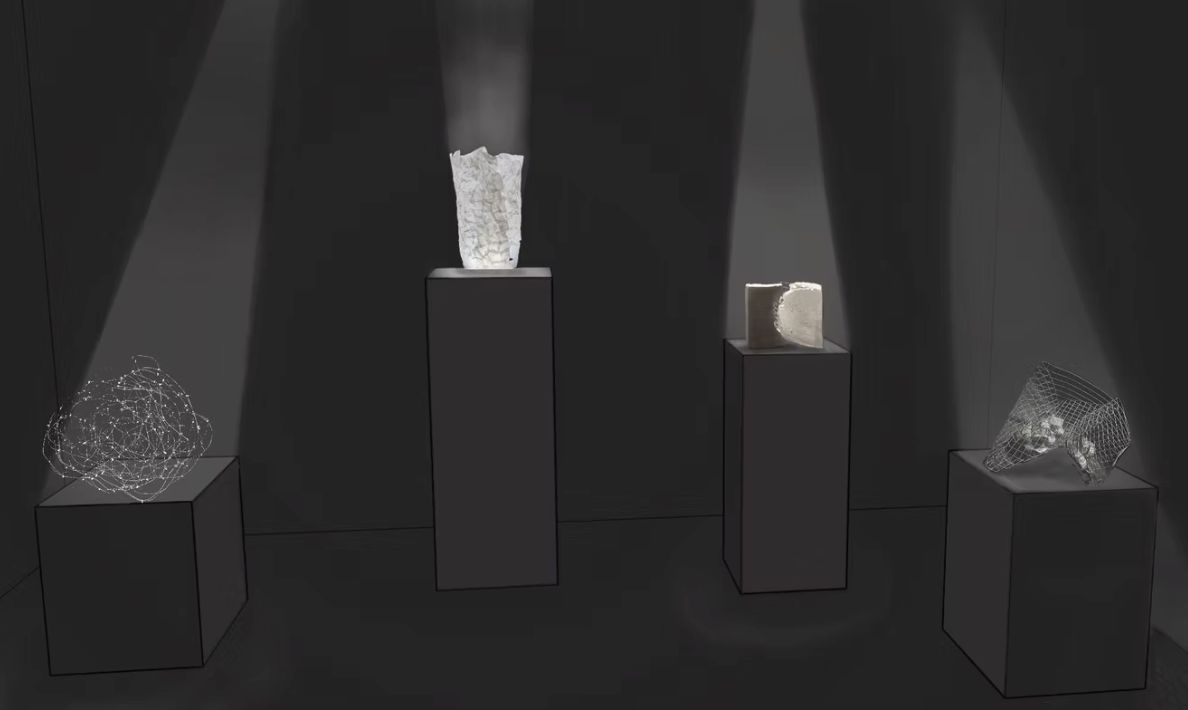In 2023, I wrote an article entitled How a Visual Artist With Aphantasia Drew What She Couldn’t “See” about how I overcame an obstacle in my studies—my inability to visualise images—owing to aphantasia. At the time, I was midway through a Fine Art degree, still grappling with what it meant to be an artist who couldn’t picture what they were about to create. I often felt at odds with the traditional image-making process. But now, having completed that degree, I no longer see aphantasia as a limitation. Instead, it has become the central lens through which I create and think. An Inability to Visualise Brings About a New Way of Seeing
Studying Fine Art challenged every part of how I approached creativity. Most of my peers could visualise and plan their work mentally—I had to develop systems of thinking that were more tactile, responsive, and iterative. What began as a struggle became a strength. I learned to trust the process of the making itself—not an image in my mind, but the hands-on engagement and exploration with materials, structure, and meaning.
My background in Cartography (map making) gave me a natural affinity for grids, order, and systems. As my work progressed, those became not just formal tools but conceptual ones. The grid became a metaphor for what I couldn’t access—memory, imagery, connection. And it gave me a foundation on which to build.
Building a Language for the Unseen
Aphantasia forced me to work differently. Instead of visualising what I wanted to create, I began to assemble from fragments: photographs, textures, stories, and remembered facts. I used repetition, modular components, and archival materials to create meaning—sometimes without fully understanding what I was making until it was complete. I leaned into the abstract: not to avoid the personal, but because abstraction allowed me to express something I couldn’t visualise but still deeply felt.
My final year’s body of work, a series entitled Absence of Light, was a turning point. It documented my evolving relationship with memory, image, and identity. Using sculpture, drawing, and experimental media, I explored what it means to live without a visual archive—and how to make one anyway. The series wove together analogue photographs, pixelated fragments, written memories, and physical structures to simulate what it’s like to remember without seeing. Each work was a step toward accepting that my form of recall—factual, emotional, disjointed—is just as valid. Absence of Light Digitally rendered exhibition From Acceptance to Direction
Completing the degree helped me shed the idea that artists must “see” in order to create. It taught me to develop a practice grounded in material exploration, conceptual thinking, and emotional truth. It also taught me to embrace exploration—the need to test, build, undo, and try again.
That same spirit of experimentation has been recognised beyond the studio. In 2024, I was awarded first prize in the Andor Meszaros Sculpture Prize with the Association of Sculptors Victoria for my work Misaligned. Just two weeks later, I received a local photographic award—a pairing of achievements that celebrated both my sculptural and photographic practice, and affirmed the breadth of my creative approach. Today, my work continues to be shaped by aphantasia, but no longer in defiance of it. I now use it as a creative foundation—a way to question how memory is constructed, how we define identity, and how art can communicate what we don’t always fully understand ourselves.
My most recent work continues to explore archival imagery, but with an increasing focus on sculptural form. I’ve been experimenting with found materials like old slide frames and film negatives, and objects that resemble personal archives—with content I know is meaningful, but can’t fully interpret. These works reflect both loss and resilience: a determination to hold onto something I cannot relive, and the quiet power of acknowledging that absence.
Moving Forward
Aphantasia no longer feels like a gap to overcome—it’s a space from which to make. My future practice is deeply rooted in that space: between knowing and not knowing, between presence and disappearance. I’m currently developing new works that examine how stories, objects, and fragments can become stand-ins for memory—a kind of personal archaeology.
Studying Fine Art didn’t teach me to visualise. It taught me to create anyway—and to find joy in the process of building something that never existed in my mind’s eye, but exists powerfully in the world.

